Abstract
We used three complementary techniques to vary the chemical potential of water in lipid/water mixtures; we measured the work of removing water from the multilayer lattice formed in water by the zwitterionic phospholipid egg lecithin. By x-ray diffraction, we observed the structural consequences of water removal. There are no discrete classes of "bound water" in this system; the work of removal is a continuous function of water content and lattice repeat spacing. From 30 to 3 A separation between bilayers there exists an exponential "hydration force" repulsion with a 2.6 A decay length. This interaction translates into a very large force to prevent contact between vesicles and planar membranes. It may be an important feature in controlling vesicle-to-cell fusion. As water is removed, bilayers not only move closer, but thicken as the lipid polar groups on the same bilayer move closer together. It is possible to divide the applied work into that of direct bilayer repulsion and that of bilayer deformation. We thus obtained a first determination of the lateral pressure required to create large increases in bilayer thickness and concomitant decreases in bilayer area. The lateral pressure reaches 25 dynes/cm for a 25% decrease in bilayer area. Systematic measurements of the mechanical properties of bilayers suffering such large deformation will allow critical tests of theories on bilayer stability and phase transition.
Full text
PDF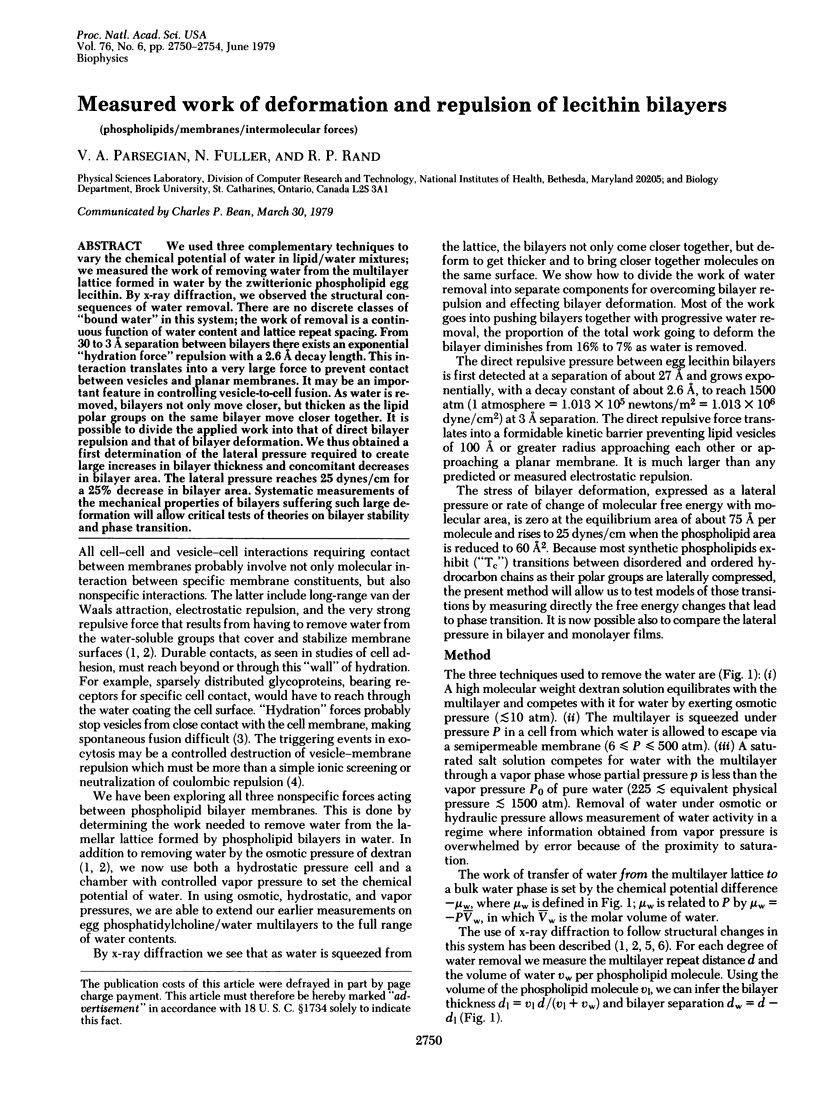
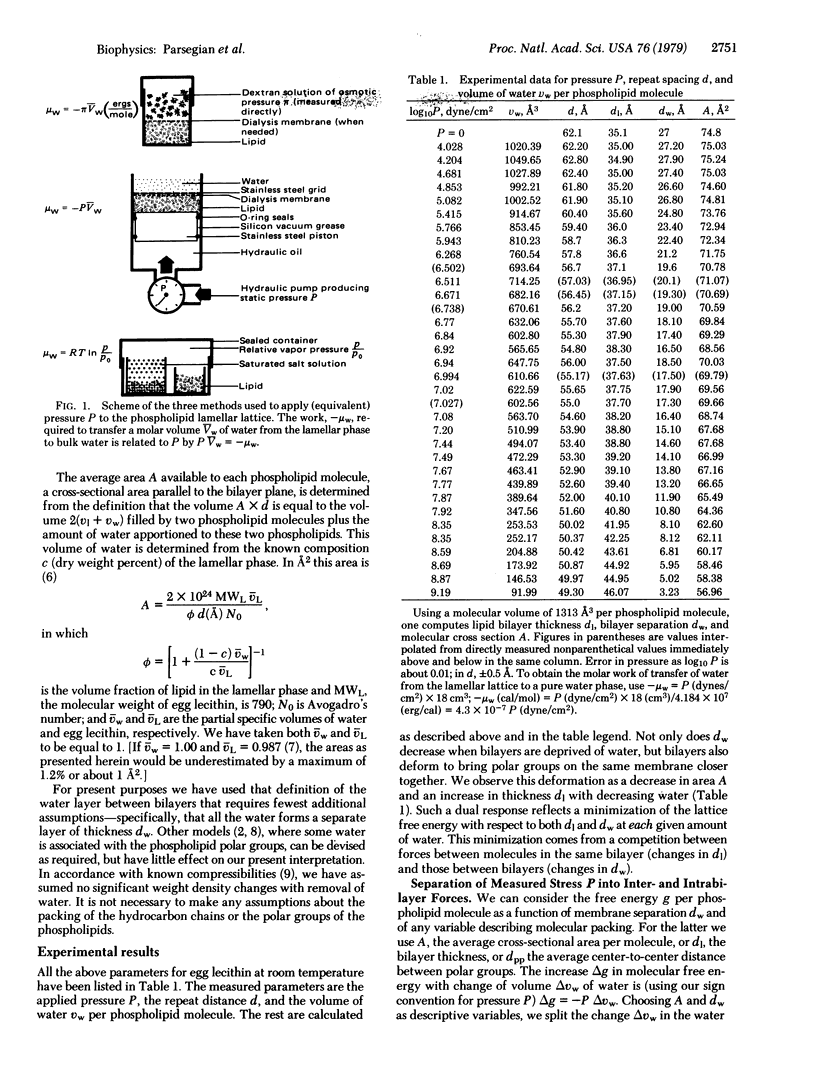
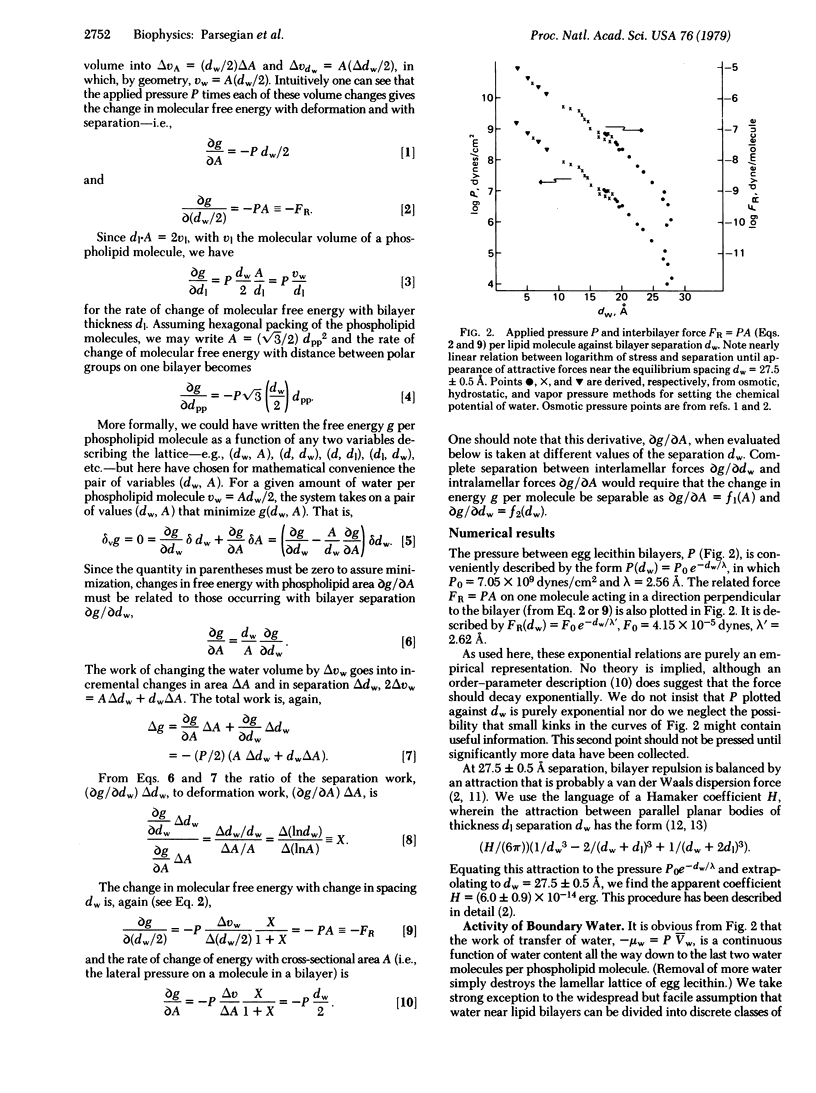
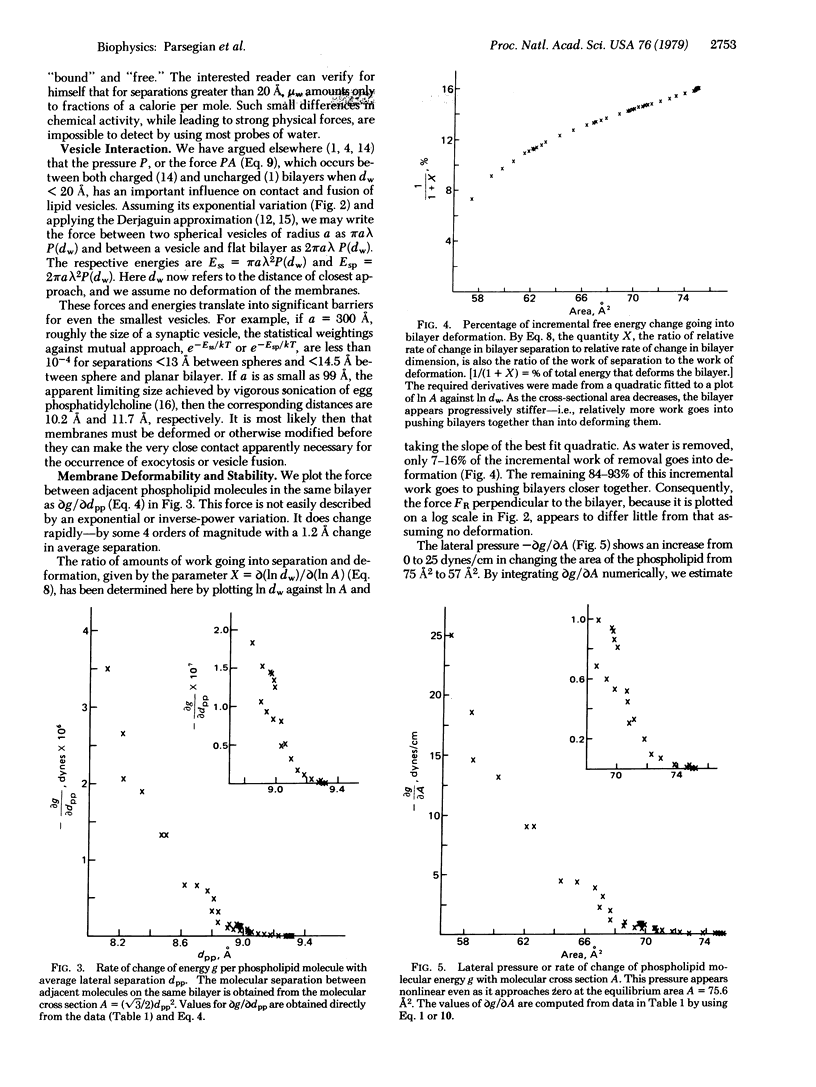
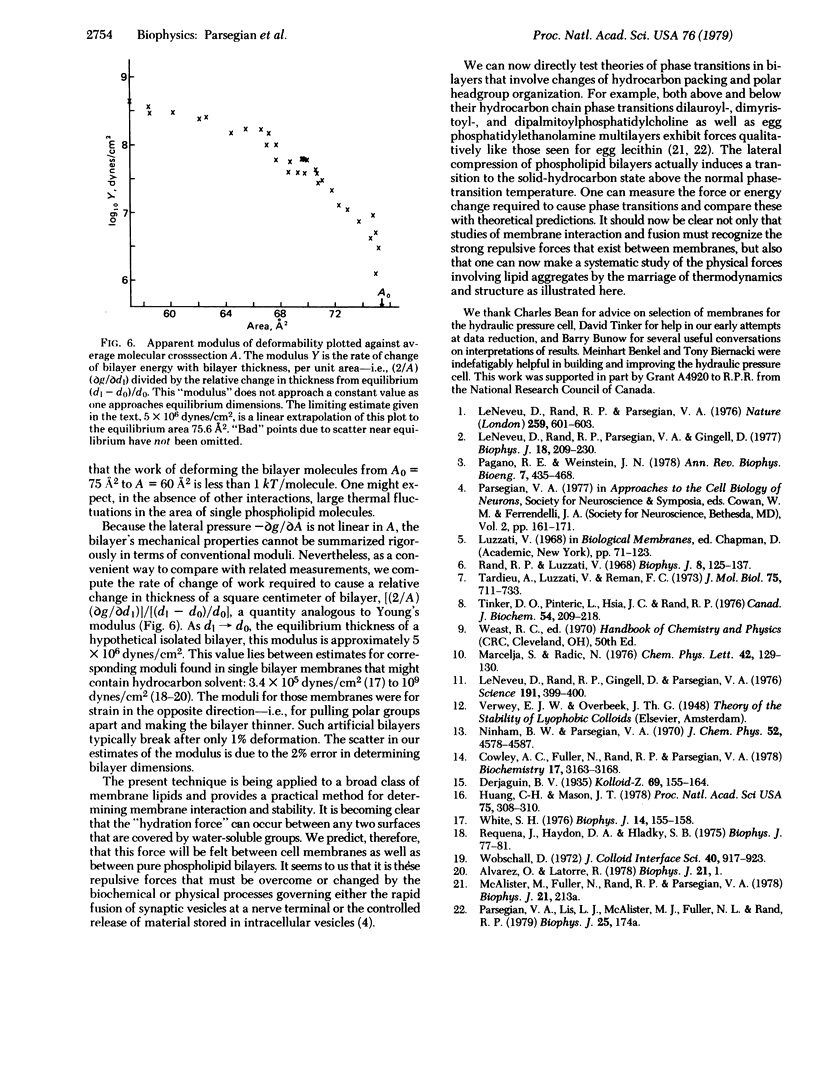
Selected References
These references are in PubMed. This may not be the complete list of references from this article.
- Alvarez O., Latorre R. Voltage-dependent capacitance in lipid bilayers made from monolayers. Biophys J. 1978 Jan;21(1):1–17. doi: 10.1016/S0006-3495(78)85505-2. [DOI] [PMC free article] [PubMed] [Google Scholar]
- Cowley A. C., Fuller N. L., Rand R. P., Parsegian V. A. Measurement of repulsive forces between charged phospholipid bilayers. Biochemistry. 1978 Jul 25;17(15):3163–3168. doi: 10.1021/bi00608a034. [DOI] [PubMed] [Google Scholar]
- Huang C., Mason J. T. Geometric packing constraints in egg phosphatidylcholine vesicles. Proc Natl Acad Sci U S A. 1978 Jan;75(1):308–310. doi: 10.1073/pnas.75.1.308. [DOI] [PMC free article] [PubMed] [Google Scholar]
- LeNeveu D. M., Rand R. P., Gingell D., Parsegian V. A. Apparent modification of forces between lecithin bilayers. Science. 1976 Jan 30;191(4225):399–400. doi: 10.1126/science.1246623. [DOI] [PubMed] [Google Scholar]
- LeNeveu D. M., Rand R. P. Measurement and modification of forces between lecithin bilayers. Biophys J. 1977 May;18(2):209–230. doi: 10.1016/S0006-3495(77)85608-7. [DOI] [PMC free article] [PubMed] [Google Scholar]
- LeNeveu D. M., Rand R. P., Parsegian V. A. Measurement of forces between lecithin bilayers. Nature. 1976 Feb 19;259(5544):601–603. doi: 10.1038/259601a0. [DOI] [PubMed] [Google Scholar]
- Pagano R. E., Weinstein J. N. Interactions of liposomes with mammalian cells. Annu Rev Biophys Bioeng. 1978;7:435–468. doi: 10.1146/annurev.bb.07.060178.002251. [DOI] [PubMed] [Google Scholar]
- Rand R. P., Luzzati V. X-ray diffraction study in water of lipids extracted from human erythrocytes: the position of cholesterol in the lipid lamellae. Biophys J. 1968 Jan;8(1):125–137. doi: 10.1016/S0006-3495(68)86479-3. [DOI] [PMC free article] [PubMed] [Google Scholar]
- Tardieu A., Luzzati V., Reman F. C. Structure and polymorphism of the hydrocarbon chains of lipids: a study of lecithin-water phases. J Mol Biol. 1973 Apr 25;75(4):711–733. doi: 10.1016/0022-2836(73)90303-3. [DOI] [PubMed] [Google Scholar]
- Tinker D. O., Pinteric L., Hsia J. C., Rand R. P. Perturbation of lecithin bilayer structure by globoside. Can J Biochem. 1976 Mar;54(3):209–218. doi: 10.1139/o76-033. [DOI] [PubMed] [Google Scholar]
- White S. H. Letter: Comments on "electrical breakdown of bimolecular lipid membranes as an electromechanical instability". Biophys J. 1974 Feb;14(2):155–158. doi: 10.1016/S0006-3495(74)70007-8. [DOI] [PMC free article] [PubMed] [Google Scholar]


